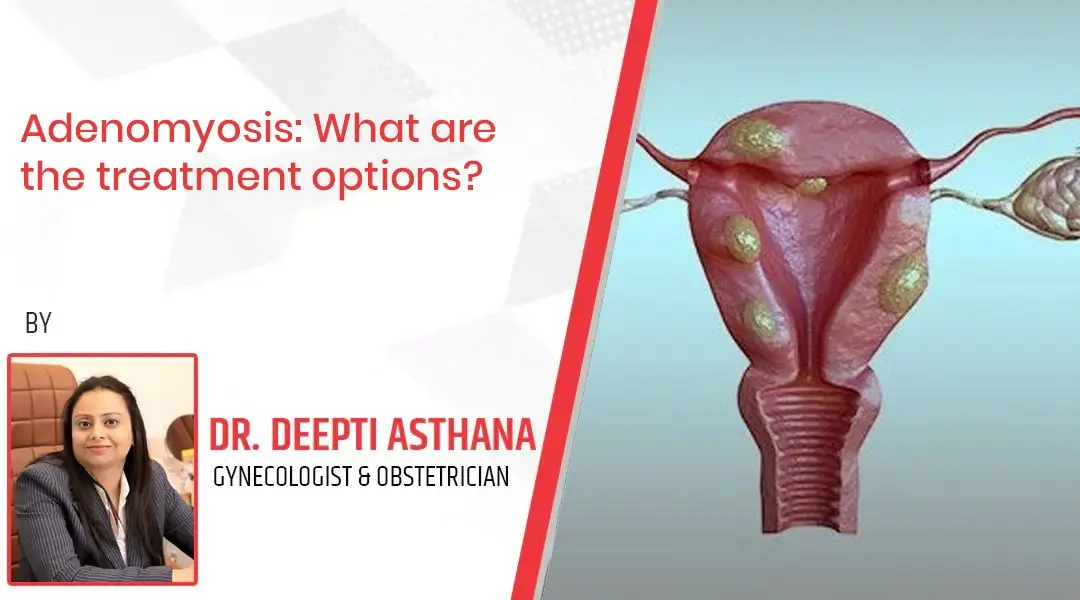
Adenomyosis is a condition in which the tissue that normally lines the uterus grows into the muscle wall of the uterus. This can cause heavy bleeding, pain during menstruation, and other symptoms. The condition is common among women in their 30s and 40s, and it can be difficult to diagnose. In this blog, we will discuss the treatment options for adenomyosis.

Dr. Deepti Asthana is an experienced gynecologist who has treated numerous patients with adenomyosis. In this blog, she will share her insights on the condition and its treatment.
Symptoms of Adenomyosis:
- Adenomyosis can cause a range of symptoms, including:
- Heavy bleeding during menstruation
- Painful menstruation
- Abdominal pain and cramping
- Pain during sex
- Pelvic pressure or bloating
- Irregular periods
Diagnosis of Adenomyosis:
Diagnosing adenomyosis can be challenging, as the symptoms can be similar to other conditions, such as fibroids or endometriosis. However, some tests that can help diagnose adenomyosis include:
- Pelvic exam
- Ultrasound
- MRI
- Biopsy
Treatment options for Adenomyosis:
The treatment for adenomyosis depends on the severity of the symptoms, the patient’s age and overall health, and whether or not the patient wants to have children in the future. Some treatment options include:
- Pain relievers: Over-the-counter pain relievers like ibuprofen can help alleviate pain and cramping during menstruation.
- Hormone therapy: Hormone therapy can help regulate the menstrual cycle and reduce heavy bleeding. It can also alleviate pain and cramping. Hormone therapy options include birth control pills, IUDs, and other forms of hormonal contraception.
- Hysterectomy: In severe cases of adenomyosis, a hysterectomy may be recommended. This involves removing the uterus and, in some cases, the ovaries. This is a permanent solution, and women who have a hysterectomy will no longer be able to have children.
- Uterine artery embolization: This is a minimally invasive procedure that blocks the blood supply to the uterus. It can help reduce heavy bleeding and alleviate pain.
- Endometrial ablation: This is a procedure that destroys the lining of the uterus, which can help reduce heavy bleeding.
- Adeno Myomectomy: This is a surgery similar to remove fibroids from the uterus. It can also be used to remove adenomyosis tissue.
Conclusion:
Adenomyosis can cause significant pain and discomfort, but there are treatment options available. If you are experiencing symptoms of adenomyosis, it is important to talk to your doctor. Dr. Deepti Asthana recommends seeking medical attention as soon as possible to get an accurate diagnosis and develop an appropriate treatment plan.



Leave a Reply